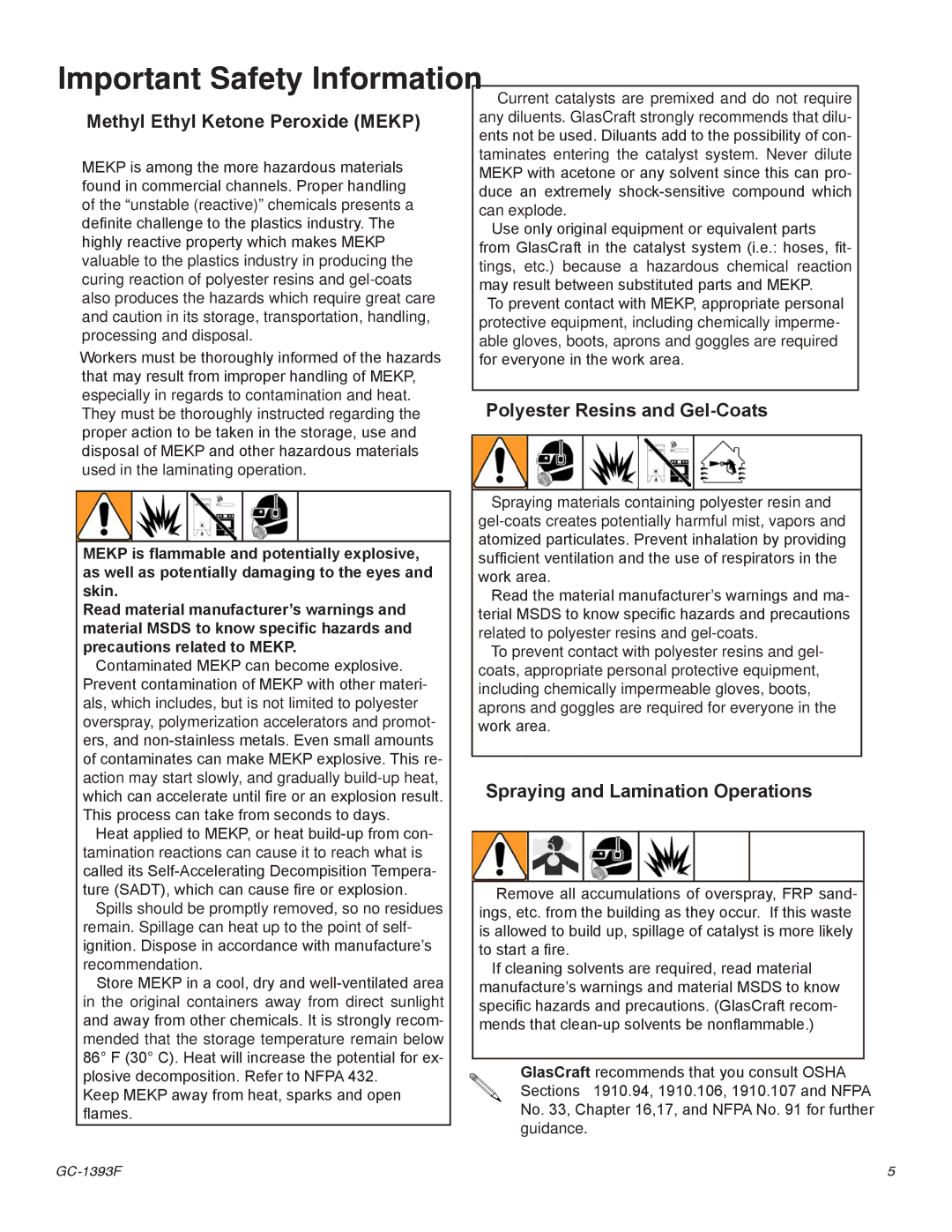
Methyl Ethyl Ketone Peroxide (MEKP)
MEKP is among the more hazardous materials found in commercial channels. Proper handling of the “unstable (reactive)” chemicals presents a definite challenge to the plastics industry. The highly reactive property which makes MEKP valuable to the plastics industry in producing the curing reaction of polyester resins and
Workers must be thoroughly informed of the hazards that may result from improper handling of MEKP, especially in regards to contamination and heat. They must be thoroughly instructed regarding the proper action to be taken in the storage, use and disposal of MEKP and other hazardous materials used in the laminating operation.
MEKP is flammable and potentially explosive, as well as potentially damaging to the eyes and skin.
Read material manufacturer’s warnings and material MSDS to know specific hazards and precautions related to MEKP.
Contaminated MEKP can become explosive. Prevent contamination of MEKP with other materi- als, which includes, but is not limited to polyester overspray, polymerization accelerators and promot- ers, and
Heat applied to MEKP, or heat
Spills should be promptly removed, so no residues remain. Spillage can heat up to the point of self- ignition. Dispose in accordance with manufacture’s recommendation.
Store MEKP in a cool, dry and
Keep MEKP away from heat, sparks and open flames.
Current catalysts are premixed and do not require any diluents. GlasCraft strongly recommends that dilu- ents not be used. Diluants add to the possibility of con- taminates entering the catalyst system. Never dilute MEKP with acetone or any solvent since this can pro- duce an extremely
Use only original equipment or equivalent parts from GlasCraft in the catalyst system (i.e.: hoses, fit- tings, etc.) because a hazardous chemical reaction may result between substituted parts and MEKP.
To prevent contact with MEKP, appropriate personal protective equipment, including chemically imperme- able gloves, boots, aprons and goggles are required for everyone in the work area.
Polyester Resins and Gel-Coats
Spraying materials containing polyester resin and
Read the material manufacturer’s warnings and ma- terial MSDS to know specific hazards and precautions related to polyester resins and
To prevent contact with polyester resins and gel- coats, appropriate personal protective equipment, including chemically impermeable gloves, boots, aprons and goggles are required for everyone in the work area.
Spraying and Lamination Operations
Remove all accumulations of overspray, FRP sand- ings, etc. from the building as they occur. If this waste is allowed to build up, spillage of catalyst is more likely to start a fire.
If cleaning solvents are required, read material manufacture’s warnings and material MSDS to know specific hazards and precautions. (GlasCraft recom- mends that
GlasCraft recommends that you consult OSHA Sections 1910.94, 1910.106, 1910.107 and NFPA No. 33, Chapter 16,17, and NFPA No. 91 for further guidance.
5
